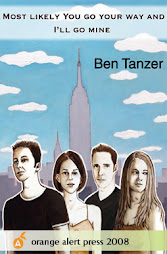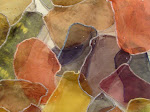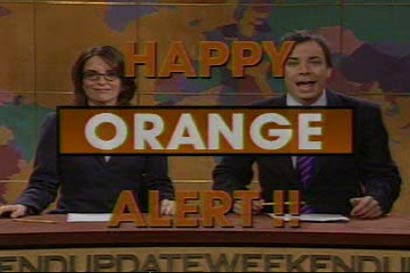
Bill Shute
On this a day of giving thanks and reflecting on the events and people that we have been grateful for this past year, I felt there would be no better time to feature the poet, publisher, all-around champion of the small press, San Antonio's Bill Shute. Getting his start in the D.I.Y/punk scene of the late seventies, Bill has always had affection towards the small press, the underground voice, and the overlooked. In reaction to the issues he faced getting his first book of poetry published back in 2005, Bill decided to print his subsequent releases himself. He called his publications Kendra Steiner Editions, and began to print small chapbooks in limited quantities. Over the next two years, Bill would go on to produce 80 chapbooks from writers such as Luis C. Berriozabal, Christopher Cunningham, Stuart Crutchfield, Doug Draime, Misti Rainwater-Lites, and many more.
Besides publishing, Bill has also been feverishly writing his own books. Back in February, he released his second book of poetry, Point Loma Purple (The Life and Work of Katherine Tingley) from Word Mechanics. He has also released several of his own smaller works through Kendra Steiner Editions, but that does not seem to be his primary focus with KSE. The focus is to give a voice to the underground by releasing their best work possible. It is not simply about releasing a chapbook with their name on it, the work must be focused, concise, and of a certain quality to be considered for release. It is this focus and Bill’s determination that will continue to drive KSE forward and allow them to find new exciting young poets.
Recently, Bill was kind enough to answer a few of my questions regarding KSE and his writing in general.
Orange Alert (OA): How did Kendra Steiner Editions come into existence?
Bill Shute (BS): When I finished my book-length poem Twelve Gates to the City: The Labours of Hercules in the Lone Star State in early 2005, the process of finding outlets for it, securing a publisher, and getting the book printed (it was made on 200-year-old letterpress equipment) took about 12 months. In March 2006, I wrote a small suite of poems called “Four Texas Streams,” which I planned to present and distribute at the readings promoting Twelve Gates. Part of its content dealt with vote fraud in a local congressional election, and I wanted to get the word out quickly while the issue was still fresh. To get physical copies of the poem into people’s hands, I had to print it up myself on my $89 Dell printer. I tried to make it eye-catching, but since I had limited resources at hand, I decided to go for a deliberately primitive and Warhol-esque look and feel. That was the first KSE “chapbook.”
I then learned that the cutting-edge music/arts store Volcanic Tongue, in Scotland, had been selling old magazines from the 80’s and 90’s that I had pieces in, and VT expressed an interest in distributing my new products. So I had local interest in San Antonio, distribution in the UK, and a circle of poet/artist friends in both North America and Europe who wanted copies. That inspired me to continue. The influence of my fellow Texan, the Houston-based music-and-arts pioneer Jandek, was very important too. His label, Corwood Industries, has a deliberately primitive yet beautiful aesthetic in the presentation of his albums, and he is prolific and resolute in following his own vision. Also, he is simultaneously completely straightforward about his art yet playfully cryptic. I like that combination. The difference between Corwood and KSE, though, is that I started bringing other poets into the mix, releasing collaborations and solo works of others.
The first other poet I brought onboard was Stuart Crutchfield, a young Glaswegian who had bought some of my chapbooks at VT and whose first book I had purchased with my VT store credit. Stuart has now done four solo chapbooks and four collaborative chapbooks for KSE. Kendra Steiner Editions has continued to grow until now we’ve got 18 poets on our team and we’ve issued 80 chapbooks in just under two years.
By the way, Kendra is my daughter, a high-school senior, who is my partner in this project.
OA: It seems as though your D.I.Y. punk aesthetics play a significant role in the end product at Kendra Steiner Editions. How does your extensive background in zines factor into your life as publisher and poet?
BS: In so many ways. The D.I.Y./punk aesthetic was about bypassing the established order in terms of production and distribution of product, about hand-made artifacts that came from real people, not from committees and corporations and arts organizations. Xeroxed fanzines with cut-up graphics; record covers made from found sources and assembled in people’s living rooms and basements; taking the cultural products of the past and re-contextualizing them and vomiting them back up in a William Burroughs-ish cut-up form. I remember using a toothbrush to splatter ink on an album cover I designed, using randomly-cut pieces from old kitschy catalogs, making Xeroxes of Xeroxes of Xeroxes to get a certain blurred psychedelic/industrial ambience.
That’s where I come from aesthetically and Kendra Steiner product reflects that aesthetic. I sometimes get condescending e-mails from people who ask me why we don’t move into a more “professional” format in our chapbooks, assuming that we don’t know how to do that and we’re just chomping at the bit to become more mainstream and to get more coverage in the so-called alternative media. I’ve worked in journalism; I’ve edited books for publishers; I have two “professional” books of poetry; my job requires me to use computer graphics. I know how to do that if that’s what I wanted to do. We want a product homemade in a technically primitive manner. The aesthetic presentation of the chapbooks is part of the total package, as important as the poetry enclosed. It’s like the great Oregon-based punk/psychedelic rocker Fred Cole and his longtime band Dead Moon. Fred recorded for a major label in the late 1960’s; he appeared in a Hollywood movie. He would know how slick product is made, but he has chosen for three decades to issue mono/lo-fi recordings in a primitive punk-rooted aesthetic. That’s his artistic choice. And our format is our artistic choice.
I’m also influenced by those artistic movements that influenced punk, such as Fluxus. In fact, our early releases, which were mostly traded with other poets and artists and not sold (except by VT ), could be seen as an extension of the “mail art” movement. By the way, we’re starting a small reprint series, in editions of 18 copies, of some of those early long-out-of-print chapbooks. We’ll be putting out one a month for the next year.
Of course, I must credit d.a. levy and his mimeograph publishing activities and the small presses of the Beat and New York School poets. When I was growing up in the 70’s, one could still find those original books and chapbooks and broadsides buried in the back of used bookstores, untouched for ten years, for next to nothing. As I was learning about poetics and forming my own aesthetic, the Beat and Fluxus and psychedelic poets and artists of the 60’s were my heroes and models. They still are.
With the internet and cheap home-publishing set-ups, we’ve gone beyond the mimeograph and Xerox age. In true Fluxus and D.I.Y. fashion, ANYONE can now imagine something and then bring it into multi-dimensional reality with equipment and materials found in most homes...or the home of a friend! Anyone can now bypass the smug gatekeepers of “alternative culture,” and everyone should!
OA: How was the decision made regarding the length and print run of your chapbooks?
BS: Edition size of KSE chapbooks has ranged from 15 to 90 copies, most between 40 and 75. I try to estimate how many copies we can distribute in three months. KSE is like the small record labels of the 50’s or 60’s, which would lease one of their records to a larger label if the record began to break out regionally. After our small printings sell out, the authors are encouraged to place the works elsewhere or post them on online poetry websites or include them in book-length collections. We get out a small edition quickly to a devoted audience of readers who want it, and then we move on to the next project. Our strength is the ability to work quickly, efficiently, and cheaply, getting the work out there, a distinctive-looking product that commands attention before one even looks inside. The poetry should then speak for itself.
OA: I really enjoy the concept behind the "Next Exit" series. How did that series come about? Wouldn't it be remarkable if when it is all said and done you have a poem published about every state in the nation?
BS: Thanks. I’ve always appreciated poems with a strong sense of place. Poets who have written of New York-- Hart Crane, Paul Blackburn, Charles Reznikoff, Stefan Brecht--often do a great job getting me to feel and smell and taste and see and hear the details of their city. In my Twelve Gates, I set each of my modern “labours” in a different town, pretty much across the I-10 corridor, from Las Cruces, New Mexico, through Texas, and ending up in Lake Charles, Louisiana. I wanted readers to experience the texture of these places, to feel the reality of the places. The Next Exit series was an extension of that (of course, I’ve lived for almost twenty years in a great and culturally rich city, San Antonio, Texas, which always inspires me to write place-specific poetry).
The first Next Exit book featured work by me and by West Coast poet Doug Draime, whose work I have been reading since the 1970’s and who was and is one of my poetic heroes. The “title” of each poem was the town and state, and the poems would be one page each, but the poet had the freedom within those parameters to do what he wanted. I think I also asked Doug to set them in at least two different states, but other than that, he was free. Since then Thomas Michael McDade, Misti Rainwater-Lites, Zachary C. Bush, Brad Kohler, and Christopher Cunningham have joined the series, and we’re taking it out of the USA in the next two volumes, with K. M. Dersley and Adrian Manning doing an all-England edition, and Stuart Crutchfield doing an all-Scotland edition. Although there have been variations in the series (we’re at six volumes as of today), the basic concept was to juxtapose the work of two different poets in each volume. Counterpoint is a concept I use in all my own writings and which I also use as an editor of others’ writings. I encourage the poets to have stylistic diversity in the pieces they write for each NE volume, and I put a lot of effort into programming the poems in what I think is the most stimulating and the most expansive order. I like the fact that many readers who know the other works of the authors in the Next Exit series sometimes can’t tell which poems belong to which poet.
We won’t get to every state with the series--we’ll probably cap the series at ten volumes while the concept is still fresh and people have not tired of it. The last volume will consist of me (my wife, Mary Anne, suggested that since I started the series, I should end it too) and Misti Rainwater-Lites (because no one could possibly follow Misti!). After volume nine, I’ll contact Misti, and we’ll do a final volume together.
OA: As a poet, your work seems to focus a lot on form. Your words weave and jump around the page like children of various ages, some take small steps and some take large leaps. Why aren't your words aligned left, straight and narrow, why are they left to roam the entire spectrum of the page?
BS: The form of each piece is different, in the service of the experience I want the reader to have. I do sometimes use a traditional left-hand margin. Some of my pieces play on the assumptions of the sonnet form in terms of the octave and sestet representing proposition and resolution, respectively. I even published a chapbook of blank verse Petrarchan sonnets in 2006, called “Sonnets For Bill Doggett”, which will eventually be part of the reprint series. But you’re correct, most of my pieces use space and use the entire page as a canvas. My two foundations in terms of poetic structure are probably later William Carlos Williams (with his three-part “stairstep” line...many of my pieces extend and redefine that concept) and Paul Blackburn (his use of spacing and word placement). Blackburn is, overall, the poet most influential on my work. If you check out his 600+ page Collected Poems, you’ll find an incredible diversity of forms (of course, that’s also true of W. C. Williams’ Paterson, another book very influential on me)--it could be a life-long textbook on the possibilities of poetic form. The spacing in my poems--like an actor’s script marked for pauses or sheet music containing measures of rests--controls the reading experience. I’m in no rush with my poems. I present a phrase, a cluster of words, and then I may punctuate it with space or silence. The poetry of Frank Samperi or the late 1960’s Robert Creeley in such works as Words and Pieces would be good places to start for someone wanting to investigate that aspect of poetry. My favorite jazz pianist, Paul Bley, uses a lot of space and silence in his work--he will suspend a note cluster and let it reverberate and let it fade. When I do poetry readings and I try to prepare the audience, I usually talk about montage sequences in films and how they present a series of images that may not have any kind of traditional plot development or chronology, but through their contrast and the composite image they leave in the mind, they communicate complex feelings/ideas and suggest far more than they state. Much of my audience at readings is often people who aren’t regular poetry readers, but they all watch films and they all understand how an ensemble piece with ten subplots works, and they all understand montage sequences.
With Kendra Steiner Editions and the format that we use, I tend to compose multi-poem suites that fit on five or six pages. Structural forms such as the triptych or the fugue give me concepts that I then try to apply to poetry. During the summer of 2007 I wrote a number of pieces that were influenced by the visual arts, by painters such as Bacon and Tapies and Hockney and Malevich. I would try to understand how their works were constructed, the principles behind the making of their works, and in my own way I would try to find ways of bringing those principles to poetry. The painter Malevich went through a period where he had no representation of objects in his work--I created a sequence of poems called “Objectless” where I used no nouns or pronouns and did no naming--I used prepositions and participles and adverbs and had no “objects” in that work, yet I feel that I created tension, setting, dramatic movement, rising action, and even a kind of resolution at the end. The possibilities in poetry are endless. I don’t limit myself by having all my poems use the left margin as my base any more than I have one type of content or one poetic voice or one poetic form.
Kendra Steiner Editions has published 26 chapbooks in what we call the “sound library series,” where the poems are rooted in and grow out of particular musical pieces. We have started a series devoted to poetic re-imaginings of z-grade art brut cinema, beginning with Barry Mahon’s cold-war minimalist epic Rocket Attack USA. There is the series of poems rooted in the visual arts that I mentioned earlier. We’ve put out about ten chaps that use images integrated into the text as part of the poetic experience. We’ve done dual-column poems and both horizontal and vertical format chaps. I sometimes use a poetic stanza where the first line will start, say, twenty-five spaces to the right of the left margin, and each line after that will come in five spaces until the final line of the stanza reaches the left margin, to create a kind of resistance to traditional flow, a kind of poetic drag. All of the poets here try to take chances and to figure out for ourselves the solutions to artistic problem-situations we put ourselves into. There are no MFA poets among our ranks. We are not controlled by French literary theory. We are not products of lowest-common-denominator writing workshops. We are not at war with any other poetic movements. Personally, I wish only the best for anyone writing any kind of poetry. When I go into an independent record store in a major city, I may not buy anything from the Bluegrass or Afro-pop section, but I’m glad it’s there to provide a fix for the people who get their artistic sustenance from it. The more poets working, the better as far as I’m concerned. We play our small role from San Antonio in that big picture. Others can be the judge of how significant or worthwhile we are.
OA: What's next for Bill Shute?
BS: For KSE, we’ll continue issuing at least two chapbooks per month through mid-2008. Among the poets joining us in the next few months are Michael Layne Heath, from San Francisco, and Glenn W. Cooper, from Tamworth, Australia--also, Doug Draime and Luis Cuauhtemoc Berriozabal (KEEPERS OF SILENCE (KSE #82), December 20th) and Stuart Crutchfield will be back with new chapbooks.
As for myself, I’ve been doing research and making notes for two years on a 25-part book-length poem called Self Storage, which I’ll describe as a post-modern, Texas-based answer to Spoon River Anthology.
With KSE taking off as it has, keeping me busy as both editor/publisher and as writer of my own chapbooks, I’ve put that project on the back burner, but I want to get back to it in 2008. I’ve done collaborative works with five different poets in 2006/2007, some of whom like Zachary and Stuart are half my age, and I’d like to continue collaborative work. There isn’t enough of it in poetry. I did a collaboration with Zachary C. Bush last month called “Intervals,” and that was an exciting experience, an improvisational creation where we set up the parameters and poetic structures, determined some key images and phrases, and then jammed as if we were competing jazz musicians at some after-hours cutting contest. I also love publishing poets such as Doug and Luis and Misti and Stuart and K.M. Dersley. Reading their writings is exciting and rewarding, and I feel privileged to work with them in helping them achieve their vision in these small books of ours. I do all the editing, formatting, and artwork in consultation with them, and when they are happy with their chapbooks, I feel as though I have been midwife to the birth of a wonderful child. Even though we may print only 40 copies of something, that feeling, and holding the actual product in my hand, makes it all worthwhile.
Abbie Hoffman wrote in Steal This Book that “freedom of the press belongs to those that own the distribution system.” The struggle against that power continues, and will continue as the “alternative” continues to get co-opted by the now-highly-segmented mainstream and by academia.
The best way to see where KSE is coming from or see what chapbooks we have presently available is to check out the blog, located at http://kendrasteinereditions.wordpress.com/ . And we always offer any three chapbooks for $10, postpaid in North America.
Bill also has copies of his two books, TWELVE GATES TO THE CITY ($8) and POINT LOMA PURPLE ($10) available upon request.
+by+Nick+Volkert).jpg)





















14 comments:
Bill & Jason,
Great interview and thank you
for your support of the small
press.
I echo Luis' sentiments.
good stuff.
thanks indeed...
If there are any Canadian readers present, be advised that you can pick up Bill's most recent work,(Tingley) at Pages on the very fashionable Queen Street West in Toronto, Ontario
Fans of Spoon River Anthology might be pleased to know that there's a new online edition at
http://spoonriveranthology.net/
It has comments, cross-links and other features to help today's reader understand and enjoy this classic work.
Bill Shute is a man of wide tastes and intellect and has a massive appetite for work. Single-handedly he is refreshing parts of the writing tradition others have ignored to their cost. The chapbooks are bright and fresh as fresh rolls. What he has achieved so far is amazing, and how stupendous it will keep getting no one can say. Buy something today to support and get in on the Kendra Steiner phenomenon.
Really Outstanding post. I love these. It will useful for any new comer and expert guys also.
Thanks for your excellent stuff.
Pleased to see this post
thanks
Clipping Path NYC
So amazing post. Thanks for share it.
Very informative and knowledge-based post. I'm really appreciated and become a fan of your article. Really Outstanding post. Please keep sharing with us like this. Thanks.
Happy to see your post.
nice post...thanks for sharing...
Really excellent website. I appreciate your post. Thanks
Your Written article and topic both are excellent . Thank you for your shared.
Background Removal Services
Post a Comment